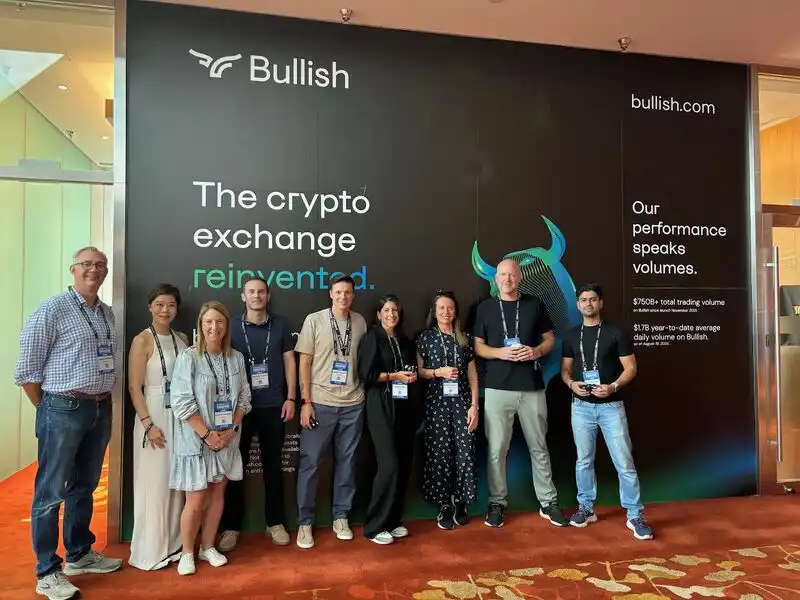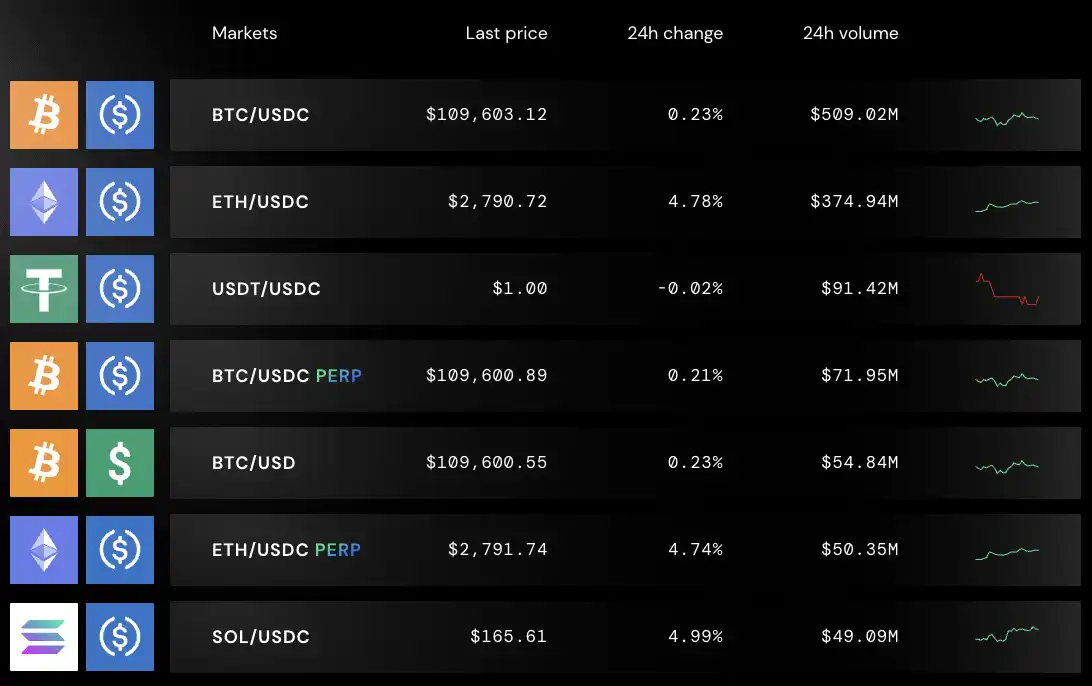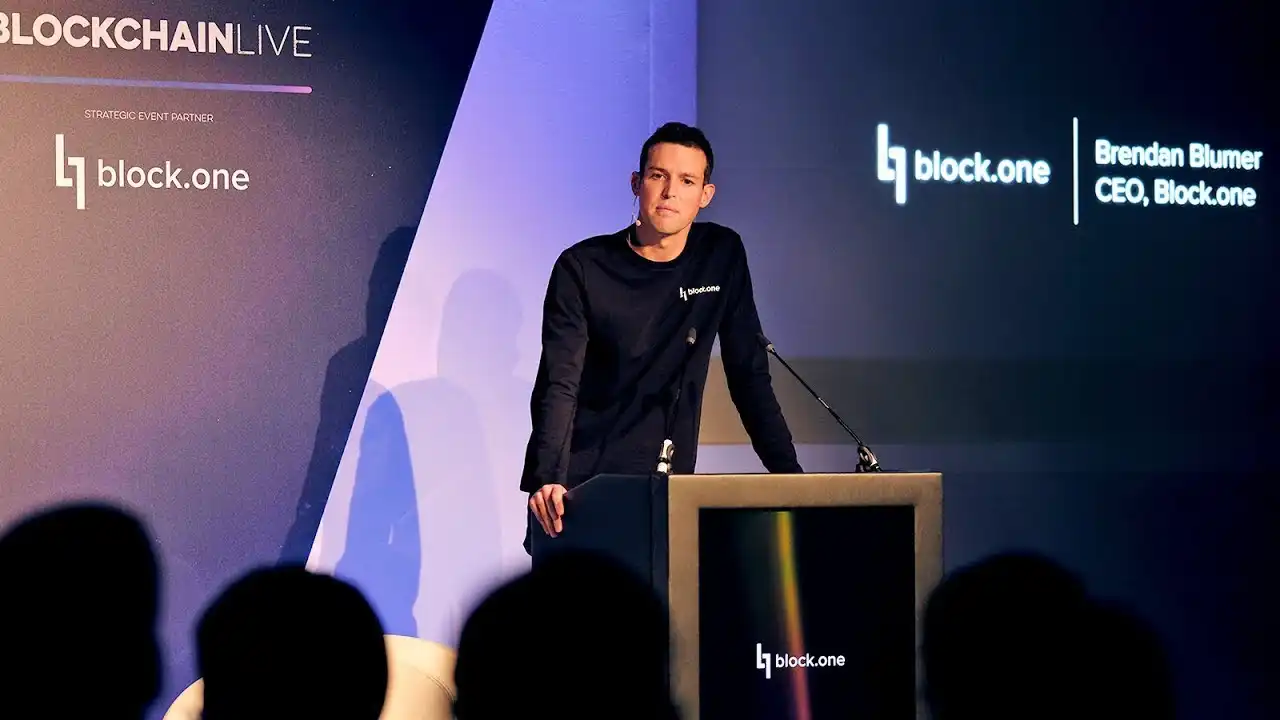On July 19, 2025, CNBC reported that Bullish has officially submitted its IPO documents to the U.S. Securities and Exchange Commission (SEC), planning to list on the New York Stock Exchange under the ticker symbol "BLSH." This marks another cryptocurrency company attempting to enter the U.S. stock market, following Circle and Coinbase.
According to the prospectus, as of the first quarter of 2025, the cumulative trading volume on the Bullish platform has reached $12.5 trillion, with an average daily trading volume exceeding $2.5 billion in the first quarter. Bitcoin trading volume reached $108.6 billion, a year-on-year increase of 36%.
In the highly profitable CEX (Centralized Exchange) sector of the cryptocurrency space, Bullish may not be a well-known name, but its "background" is quite impressive.
In 2018, EOS emerged, claiming to be the "Ethereum killer." The company behind it, Block.one, conducted the longest and largest ICO (Initial Coin Offering) in history, raising an astonishing $4.2 billion.
A few years later, as the hype around EOS faded, Block.one "started anew" and turned to create a cryptocurrency trading platform focused on compliance and targeting traditional financial markets—Bullish—resulting in the EOS community "kicking them out."
Bullish officially launched in July 2021. The initial funding included $100 million in cash from Block.one, 164,000 Bitcoins (valued at approximately $9.7 billion at the time), and 20 million EOS; external investors added another $300 million, including PayPal co-founder Peter Thiel, hedge fund mogul Alan Howard, and well-known cryptocurrency investor Mike Novogratz.
Pro-Circle, Anti-Tether: Bullish's Compliance Ambitions
From the beginning, Bullish's positioning has been clear: scale is not important, but compliance is crucial.
Bullish's ultimate goal is not to earn profits in the cryptocurrency world but to become a legitimate trading platform that can go public.
Before officially operating, Bullish reached an agreement with a listed company, Far Peak, to invest $840 million to acquire 9% of the company's shares and conduct a $2.5 billion merger, thereby achieving a backdoor listing and lowering the traditional IPO threshold.
At that time, media reports valued Bullish at $9 billion.
The merged company, Far Peak, had its previous CEO, Thomas, now serving as Bullish's current CEO, who has a strong compliance background: he was previously the Chief Operating Officer and President of the New York Stock Exchange, where he performed excellently; he established deep connections with Wall Street giants, CEOs, and institutional investors; and he has extensive resources in regulation and capital.
It is worth mentioning that while Farley has not been involved in many external investment and acquisition projects, several notable ones in the cryptocurrency space include Bitcoin staking protocol Babylon, re-staking protocol ether.fi, and blockchain media CoinDesk.
In summary, Bullish is a trading platform in the cryptocurrency space that aspires to become a "legitimate player on Wall Street."
However, ideals are often grand, while reality can be harsh. Compliance is much more challenging than they imagined.
With increasing regulatory pressure in the U.S., Bullish's original merger listing agreement was terminated in 2022, and the 18-month listing plan was scrapped. Bullish also considered acquiring FTX for rapid expansion, but that ultimately did not materialize. Bullish was forced to seek new compliance paths—such as expanding into Asia and Europe.

Bullish at the Consensus conference in Hong Kong
Bullish also obtained a Type 1 license (for securities trading) and a Type 7 license (for providing automated trading services) from the Hong Kong Securities and Futures Commission at the beginning of this year, as well as a license for virtual asset trading platforms; additionally, Bullish received the necessary licenses for cryptocurrency asset trading and custody from the Federal Financial Supervisory Authority (BaFin) in Germany.
Bullish has approximately 260 employees globally, with more than half based in Hong Kong, while the rest are distributed in Singapore, the U.S., and Gibraltar.
Another clear indication of Bullish's "compliance ambitions" is its preference for "Circle" and distance from "Tether."
On the Bullish platform, the top trading pairs for stablecoins by volume are USDC, rather than the more widely circulated and historically older USDT. This reflects its clear stance on regulatory attitudes.

In recent years, as USDT has faced increasing regulatory pressure from the U.S. SEC, its market dominance has begun to wane. Meanwhile, USDC, a stablecoin jointly launched by the compliant companies Circle and Coinbase, not only successfully listed on the U.S. stock market but also became the "first stablecoin stock," favored by the capital markets with excellent stock performance. With good transparency and regulatory adaptability, USDC's trading volume has continued to soar.
According to the latest report from Kaiko, USDC's trading volume on centralized exchanges (CEX) significantly increased in 2024, reaching $38 billion in March alone, far exceeding the monthly average of $8 billion in 2023. Among them, Bullish and Bybit are the two platforms with the largest USDC trading volumes, together accounting for about 60% of the market share.
The Love-Hate Relationship Between Bullish and EOS
If one were to describe the relationship between Bullish and EOS in one sentence, it would be "the ex and the current."
Although the news of Bullish secretly submitting its IPO application caused the price of A (formerly EOS) to surge by 17%, the truth is that the relationship between the EOS community and Bullish is not good, as Block.one turned its back on EOS and embraced Bullish.
Back in 2017, the public blockchain sector was in its golden age. Block.one released a white paper introducing EOS, a super blockchain project that touted "one million TPS and zero fees," attracting a flood of global investors. Within a year, EOS raised $4.2 billion through its ICO, setting an industry record and igniting the fantasy of being the "Ethereum killer."
However, the dream began quickly and collapsed just as fast. After the EOS mainnet launched, users soon discovered that the chain was not as "invincible" as advertised. While transfers had no fees, users had to stake CPU and RAM, making the process complex and the operational threshold high; node elections were not the "democratic governance" imagined, but were quickly controlled by large holders and exchanges, leading to issues like bribery and vote trading.
However, the real acceleration of EOS's decline was not just due to technical issues but also stemmed from internal resource allocation problems within Block.one.
Block.one originally promised to allocate $1 billion to support the EOS ecosystem, but the actual actions were completely contrary: they made large purchases of U.S. Treasury bonds, hoarded 160,000 Bitcoins, invested in the failed social product Voice, and used funds for stock trading and domain name purchases… The amount actually used to support EOS developers was pitifully small.
At the same time, the company's internal power was highly centralized, with core executives almost entirely composed of Block.one founder BB and his relatives and friends, forming a small circle-like "family business." After 2020, BM announced his departure from the project, which became a precursor to the complete split between Block.one and EOS.
What truly ignited the anger of the EOS community was the emergence of Bullish.

Block.one founder BB
In 2021, Block.one announced the launch of the cryptocurrency trading platform Bullish, claiming to have completed $10 billion in financing, with a luxurious list of investors—featuring PayPal co-founder Peter Thiel, Wall Street veteran Mike Novogratz, and other top-tier capital supporters. This new platform focused on compliance and stability, aiming to create a "bridge" for institutional investors in cryptocurrency finance.
However, this Bullish had almost no connection to EOS in terms of technology or brand—it did not use EOS technology, did not accept EOS tokens, and did not acknowledge any association with EOS, not even offering basic thanks.
For the EOS community, this was akin to a public betrayal: Block.one utilized the resources accumulated from establishing EOS to create a "new love." Meanwhile, EOS was left completely behind.
Thus, the backlash from the EOS community began.
At the end of 2021, the community initiated a "fork uprising," attempting to sever Block.one's control. The EOS Foundation, as the community representative, began negotiations with Block.one. However, over the course of a month, various proposals were discussed, but no consensus was reached. Ultimately, the EOS Foundation, in conjunction with 17 nodes, revoked Block.one's power status, expelling it from the EOS management team. In 2022, the EOS Network Foundation (ENF) initiated legal action, accusing Block.one of breaching its ecological commitments; in 2023, the community even considered a hard fork to completely isolate Block.one and Bullish's assets.
Related Reading: "The Beginning and End of the EOS Node Stopping Block.one Account Release Incident: The Mother Company Kicked Out by the Community."
After the split between EOS and Block.one, the EOS community engaged in years of litigation over the ownership of the funds raised initially, but so far, Block.one still retains ownership and usage rights to the funds.
Therefore, in the eyes of many in the EOS community, Bullish is not a "new project" but rather a symbol of betrayal, and this Bullish that secretly submitted its IPO application is always the "new love" that traded their ideals for reality—glamorous yet shameful.
In 2025, EOS officially rebranded as Vaulta to cut ties with its past, building a Web3 banking business on the foundation of its public blockchain, while also renaming its token from EOS to A.
How Much Money Does Block.one Really Have?
What we all know is that early on, Block.one raised $4.2 billion, becoming the largest fundraising event in cryptocurrency history. Logically, this funding should have supported the long-term development of EOS, aided developers, and driven technological innovation, allowing the ecosystem to grow continuously. However, when EOS ecosystem developers pleaded for funding, Block.one only handed out a $50,000 check—an amount insufficient to pay a Silicon Valley programmer's salary for two months.
"Where did the $4.2 billion go?" the community questioned.
In an email dated March 19, 2019, to Block.one shareholders, BM revealed part of the answer: as of February 2019, Block.one's total assets (including cash and invested funds) amounted to $3 billion. Of this $3 billion, approximately $2.2 billion was invested in U.S. government bonds.
Where did the $4.2 billion go? Generally, it can be summarized in three main directions: $2.2 billion in government bonds: low risk, stable returns, ensuring wealth preservation; 164,000 Bitcoins; and a small amount in stock trading and acquisition attempts, such as the failed Silvergate investment and the purchase of the Voice domain.
What many people do not know is that EOS's parent company, Block.one, is currently the private company holding the most Bitcoins, with a total of 164,000 BTC, which is 40,000 more than the stablecoin giant Tether.

Data Source: bitcointreasuries
At the current price of $117,200, these 164,000 BTC are worth approximately $18.752 billion. This means that just from the appreciation of this Bitcoin, Block.one has made over $14.5 billion on paper, roughly 4.47 times the amount raised during the ICO.
From the perspective of "cash flow is king," Block.one is very successful today, and one could even say it is a more "forward-looking" company than MicroStrategy, making it one of the most profitable "project parties" in cryptocurrency history. However, it did not achieve this by "building a great blockchain," but rather by "maximizing capital preservation, expanding assets, and exiting smoothly."
This is the ironic and real side of the cryptocurrency world: in the crypto space, the one who wins in the end may not necessarily be the one with the "best technology" or the "most passionate ideals," but rather the one who understands compliance best, adapts to circumstances, and excels at retaining money.
免责声明:本文章仅代表作者个人观点,不代表本平台的立场和观点。本文章仅供信息分享,不构成对任何人的任何投资建议。用户与作者之间的任何争议,与本平台无关。如网页中刊载的文章或图片涉及侵权,请提供相关的权利证明和身份证明发送邮件到support@aicoin.com,本平台相关工作人员将会进行核查。




